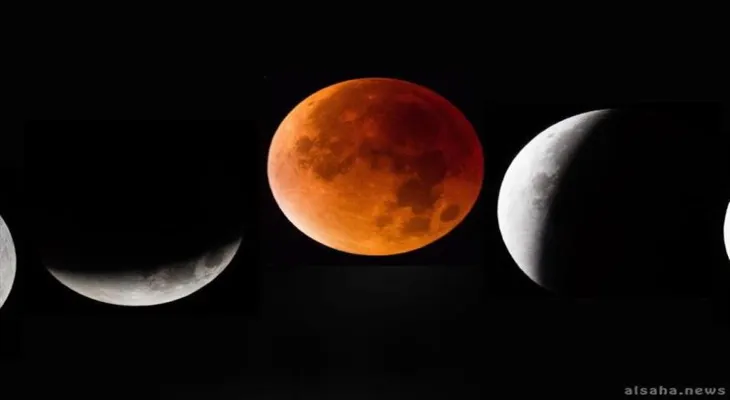Search here
Newspaper
Search here

Arab Canada News
News

Published: May 4, 2022
On the night of May 15, the blood moon will rise, and it will be the longest total lunar eclipse that Canadians have been able to see in 15 years.
A total lunar eclipse occurs when the sun, earth, and moon align so that the earth blocks the sun and its shadow falls directly on the moon's face.
The moon's glow at night comes from light reflected from the sun. During a lunar eclipse, when the moon passes into the earth’s shadow — the darkest part of the earth’s shadow — its bright white shine usually turns to a darker, redder color, giving it the informal name "blood moon."
Just over a third of all lunar eclipses are total eclipses. According to NASA, the moon will begin to pass into the earth’s shadow shortly after 10 p.m. (Eastern Time) on May 15, but will enter the umbra around 11 p.m., marking the start of the eclipse.
While the moon passes through darkness during the partial eclipse, it will appear to the naked eye as if darkness is swallowing parts of the moon, but once the moon is fully eclipsed, this darkness will be visible as reddish shadows.
Around 11:30 p.m. (Eastern Time), the moon will be completely copper-colored. The blood moon will be at its greatest eclipse at 12:11 a.m. (Eastern Time) on May 16 and will exit the shadow around 1 a.m.
This should be visible coast to coast in Canada, although exact altitude and time zones will vary.
An animated map prepared by NASA shows how the eclipse will progress with the earth’s rotation, illustrating the parts of the earth that will be able to see the eclipse at any stage.
Residents of eastern and central Canada will have slightly better viewing — the moon will have already risen in the night sky by the time the eclipse starts, meaning eastern provinces will be able to watch the full eclipse progress depending on weather-related visibility.
But in the western provinces, the moon will rise while the eclipse has already begun, making it difficult to see near the horizon. Those living in northern areas of the Northwest Territories and Yukon may catch only the end of the eclipse, or may not be able to see it if they are far north.
The moon will be completely eclipsed for about 85 minutes, or nearly an hour and a half. According to The Weather Network, this will be the longest total lunar eclipse visible from Canada since 2007.
This eclipse also occurs when the moon is near the orbit point closest to the earth, NASA says, meaning the moon appears about seven percent larger than average.
The next total lunar eclipse visible in Canada will occur in November 2022 and will be visible across the country.
Comments